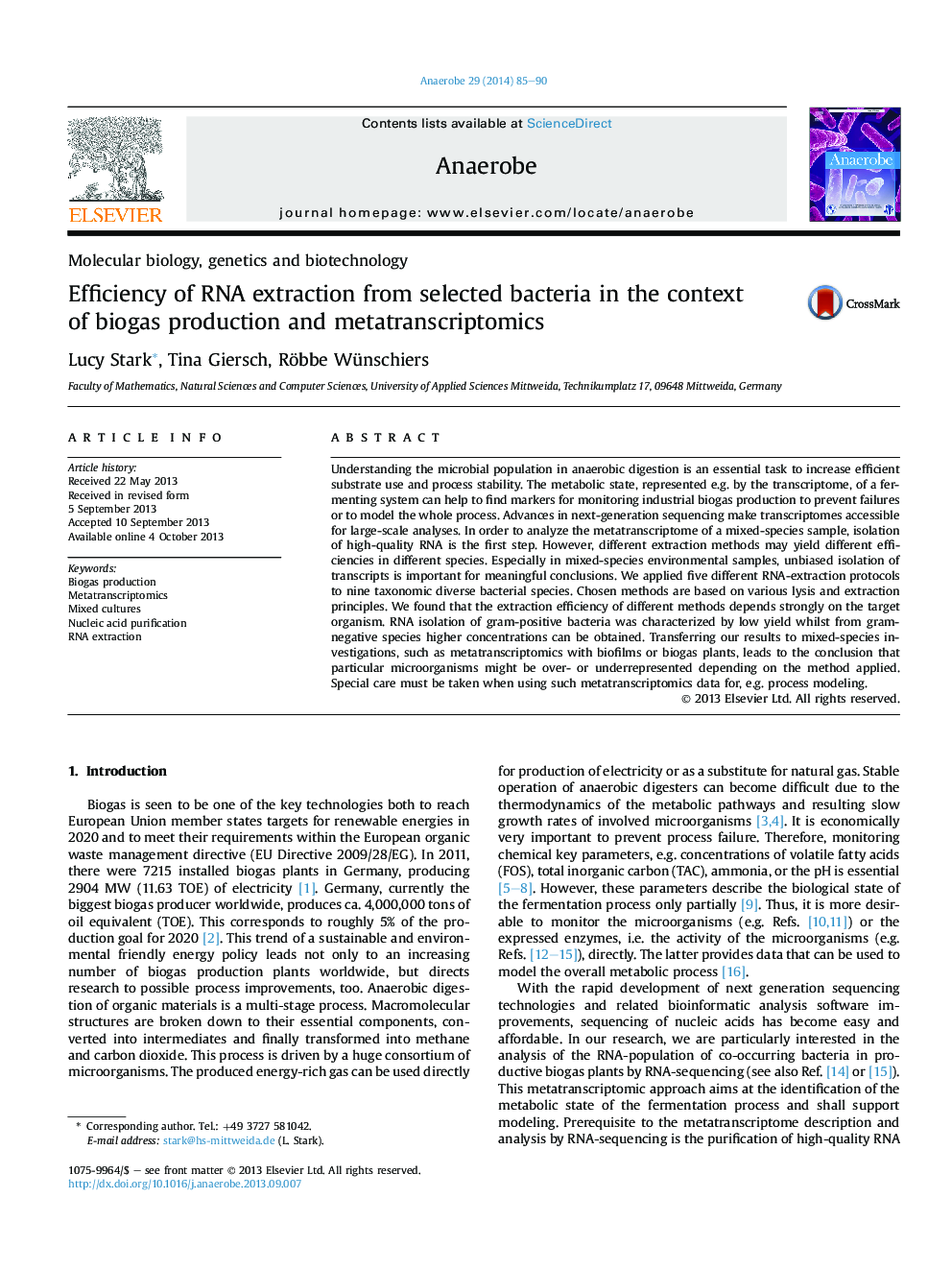| Article ID | Journal | Published Year | Pages | File Type |
|---|---|---|---|---|
| 3395124 | Anaerobe | 2014 | 6 Pages |
•We applied 5 different RNA-extraction procedures to 9 different bacterial strains.•Extraction efficiency of different methods depends strongly on the target organism.•In mixed-culture analyses some microorganisms might be over- or underrepresented.•Quantitative metatranscriptomics data may lead to misinterpretations.
Understanding the microbial population in anaerobic digestion is an essential task to increase efficient substrate use and process stability. The metabolic state, represented e.g. by the transcriptome, of a fermenting system can help to find markers for monitoring industrial biogas production to prevent failures or to model the whole process. Advances in next-generation sequencing make transcriptomes accessible for large-scale analyses. In order to analyze the metatranscriptome of a mixed-species sample, isolation of high-quality RNA is the first step. However, different extraction methods may yield different efficiencies in different species. Especially in mixed-species environmental samples, unbiased isolation of transcripts is important for meaningful conclusions. We applied five different RNA-extraction protocols to nine taxonomic diverse bacterial species. Chosen methods are based on various lysis and extraction principles. We found that the extraction efficiency of different methods depends strongly on the target organism. RNA isolation of gram-positive bacteria was characterized by low yield whilst from gram-negative species higher concentrations can be obtained. Transferring our results to mixed-species investigations, such as metatranscriptomics with biofilms or biogas plants, leads to the conclusion that particular microorganisms might be over- or underrepresented depending on the method applied. Special care must be taken when using such metatranscriptomics data for, e.g. process modeling.
